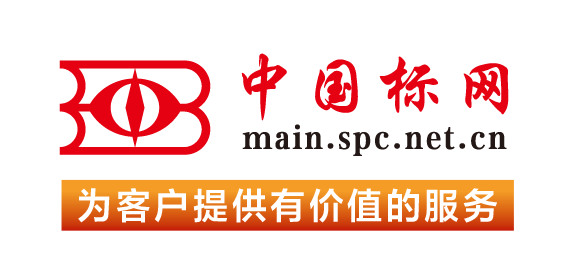【国外标准】 Standard Specification for Crosslinked Polyethylene (PEX) Line Pipe For Oil and Gas Producing Applications
本网站 发布时间:
2024-02-28
开通会员免费在线看70000余条国内标准,赠送文本下载次数,单本最低仅合13.3元!还可享标准出版进度查询、定制跟踪推送、标准查新等超多特权!
查看详情>>
适用范围:
This specification covers the requirements and test methods for outside diameter controlled, pressure rated, black metric-sized and IPS-sized crosslinked polyethylene (PEX) pipe, fittings and joints intended for oil and gas producing applications. It presents the criteria for materials made in pipe dimension ratios ranging from 6 to 17, along with workmanship, burst pressure, hydrostatic sustained pressure, bent-pipe hydrostatic pressure, stabilizer functionality, degree of crosslinking, and chemical resistance. It also includes guidelines for pipe and fittings markings.1.1 This specification covers outside diameter controlled, pressure rated, metric-sized and inch-sized black or yellow crosslinked polyethylene (PEX) pipe made in pipe dimension ratios ranging from 6 to 17. Included are requirements and test methods for material, workmanship, dimensions, burst pressure, hydrostatic sustained pressure, stabilizer functionality, bent-pipe hydrostatic pressure, degree of crosslinking, chemical resistance, and minimum operating temperature. Requirements for pipe markings are also given. The pipe covered by this specification is intended for pressure or non-pressure oil and gas producing applications, such as conveying oil, dry or wet gas, gas gathering, multiphase fluids, and non-potable oilfield water. This specification does not cover piping for gas distribution applications.1.2 This specification also includes requirements for joints made between PEX pipe and polyethylene electrofusion fittings (specified in Specifications F1055 or F3373). Fittings to be used with PEX pipe manufactured to this Specification are in Specification F2829/F2829M. Installation considerations are in Appendix X3.1.3 The text of this specification references notes, footnotes, and appendixes, which provide explanatory material. These notes and footnotes (excluding those in tables and figures) shall not be considered as requirements of the specification.1.4 Units—The values stated in either SI units or inch-pound units are to be regarded separately as standard. The values stated in each system may not be exact equivalents; therefore, each system shall be used independently of the other. Combining values from the two systems may result in non-conformance with the standard.NOTE 1: Metric sized (SI units) pipe should only be joined with corresponding metric sized fittings, and inch sized pipe should only be joined with corresponding inch sized fittings. Inch sized fittings should not be used for metric sized pipe, and metric sized fittings should not be used for IPS inch sized pipe.1.5 This standard does not purport to address all of the safety concerns, if any, associated with its use. It is the responsibility of the user of this standard to establish appropriate safety, health, and environmental practices and determine the applicability of regulatory limitations prior to use.1.6 This international standard was developed in accordance with internationally recognized principles on standardization established in the Decision on Principles for the Development of International Standards, Guides and Recommendations issued by the World Trade Organization Technical Barriers to Trade (TBT) Committee.
标准号:
ASTM F2905/F2905M-22
标准名称:
Standard Specification for Crosslinked Polyethylene (PEX) Line Pipe For Oil and Gas Producing Applications
英文名称:
Standard Specification for Crosslinked Polyethylene (PEX) Line Pipe For Oil and Gas Producing Applications标准状态:
Active-
发布日期:
-
实施日期:
出版语种:
- 推荐标准
- ASTM 51401-21 Standard Practice for Use of a Dichromate Dosimetry System
- ASTM 51956-21 Standard Practice for Use of a Thermoluminescence-Dosimetry System (TLD System) for Radiation Processing
- ASTM A1010/A1010M-24 Standard Specification for Higher-Strength Martensitic Stainless Steel Plate, Sheet, and Strip
- ASTM A1016/A1016M-24 Standard Specification for General Requirements for Ferritic Alloy Steel, Austenitic Alloy Steel, and Stainless Steel Tubes
- ASTM A105/A105M-24 Standard Specification for Carbon Steel Forgings for Piping Applications
- ASTM A1064/A1064M-24 Standard Specification for Carbon-Steel Wire and Welded Wire Reinforcement, Plain and Deformed, for Concrete
- ASTM A108-24 Standard Specification for Steel Bar, Carbon and Alloy, Cold-Finished
- ASTM A1080/A1080M-24 Standard Practice for Hot Isostatic Pressing of Steel, Stainless Steel, and Related Alloy Castings
- ASTM A1090/A1090M-19(2024) Standard Specification for Forged Rings and Hollows for Use as Base Plates in Power Transmission Structures
- ASTM A1115/A1115M-24 Standard Practice for Construction of Mechanically Stabilized Earth Walls with Inextensible Soil Reinforcement
- ASTM A1128-24 Standard Specification for Stainless Steel Shielded, Rubber Gasketed Couplings Having an Integral Restraint Feature for Joining Hubless Cast Iron Soil Pipes and Fittings Where External Restraint Is Required
- ASTM A179/A179M-24 Standard Specification for Seamless Cold-Drawn Low-Carbon Steel Heat-Exchanger and Condenser Tubes
- ASTM A234/A234M-24 Standard Specification for Piping Fittings of Wrought Carbon Steel and Alloy Steel for Moderate and High Temperature Service
- ASTM A242/A242M-24 Standard Specification for High-Strength Low-Alloy Structural Steel
- ASTM A249/A249M-24a Standard Specification for Welded Austenitic Steel Boiler, Superheater, Heat-Exchanger, and Condenser Tubes
 我的标准
我的标准 购物车
购物车 400-168-0010
400-168-0010














